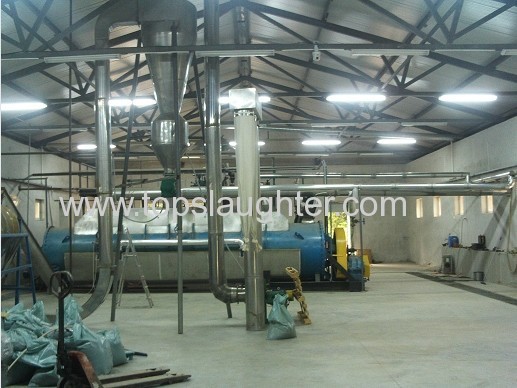
|
TOPLEA MACHINERY IMP &.EXP CO.,LTD
|
Gold Index: 15103
Product (155)
- Slaughterhouse Equipment (84)
- Poultry Farming Equipment (7)
- Cold Room (19)
- Rendering Equipment (22)
- Food Processing Equipment (23)
Poultry News (81)
Industry News (34)
Lay Out Reference (1)
INTRODUCTION TO THE POULTRY PROCESSING INDUSTRY (11)
Blog (23)
Cooperation company (9)
News (10)
Credit Report
Products Index
Blog
The Introduction of Poultry Rendering Plants

The introduction of Poultry rendering plant
Nowadays, worldwide environmental protection problem has become an issue of common concern . Not only government, but also enterprises has taken measures to jointly deal with environmental pollution for sustainable development. Poultry processing plants, as the large chicken meat suppliers, has also face the environmental problem- how to treat slaughterhouse waste. Therefore, Rendering plant emerged to not only satisfy their environmental protection demands, but also create increased profit for them where poultry waste processed as good quality and valuable protein feed.
What is poultry slaughterhouse waste?
It is a kind of waste from the process of slaughtering birds, by-product disposal as what we know like blood, feather, bone, dead animal, ill carcasses, offal, intestines and so on.
The recycling process of slaughterhouse waste treatment
Raw Material Conveying - Hydrolyzing - Dehydrating and Degreasing - Screw Conveyor - Steam Drying -Cooling convey - Grinding - Finished Protein Feed
Advantages
1.E-co friendly and Energy Saving . Unlike traditional incinerator cause air pollution and have no value added , newly rendering plants is with high value and no secondary pollution. For waste gas treatment, Toplea rendering equipments use vacuum drying and cooling equipment, to make waste gas cool down into waste water, which is a good way to save water resource. The residual gas will be processed by condensation method, to reach the emission standard through spray.
2.Value added and Increased Profit. As we mentioned, slaughterhouse waste from poultry, cattle, sheep and other animals. After rendering processed, those waste turn to be high valuable meal and , such as feather meal, blood meal, meat and bone meal, fish meal, bone meal, feather and offal meal and so on, which is used as high protein and nutrients for poultry, pet, cattle, sheep and other animal feed.
Pre Page:
Poultry Farm Equipments- the usage and...
Next Page:
How To Choose The Site Of Slaughterhouse




